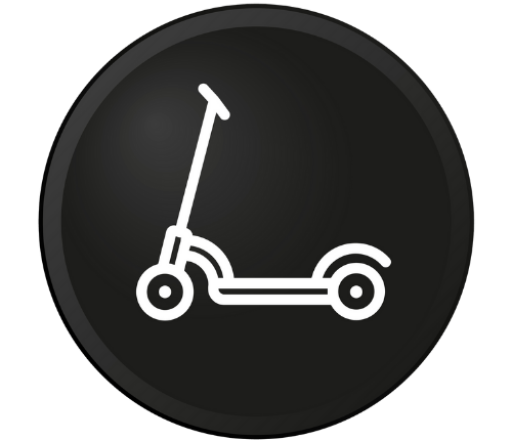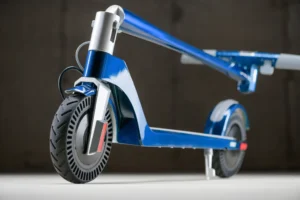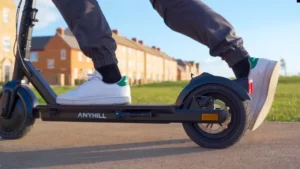Attention all scooter enthusiasts! Do you know that feeling of freedom and exhilaration as you zoom down the open road on your trusty ride? We do too. But before you hit those high speeds, it’s essential to prioritize safety first. And there’s no better way to do that than by investing in a top-quality helmet.
With so many options available, choosing the perfect one can initially seem daunting. That’s why we’ve put together this ultimate guide to help protect your head whenever you hit the pavement. So let’s dive into Scooter Safety 101: How to Pick the Perfect Helmet!
Introduction to Scooter Helmets
When it comes to choosing a scooter helmet, there are many factors you need to consider to find the perfect one for you. In this article, we will guide you through finding the ideal helmet for your needs so that you can stay safe while riding your scooter.
The first step is to decide what type of helmet you need. There are two main types of helmets: those with an open face and those with a full face. Open-face helmets offer better ventilation and visibility but less protection for your head in a fall. Full-face helmets provide more protection but can be hot and claustrophobic.
Once you’ve decided on the type of helmet you need, the next step is to choose the right size. Helmets should fit snugly but not too tight and should sit level on your head without obscuring your vision. It would be best to tighten the straps so the helmet doesn’t move around when riding.
Finally, it would help if you considered the style of helmet that you want. Helmets come in various colors and designs, so you can choose one that matches your personality or ride aesthetic. Different features are available such as visors and chin guards, so make sure to choose a helmet with everything you need to stay safe on your scooter.
What Are the Types of Scooter Helmets?
There are three types of scooter helmets: full-face, open-face, and half-helmet. Each type has its own set of pros and cons.
Full-face helmets offer the most protection, covering the entire head and face. They are great for preventing severe injuries in a fall or collision. However, they can be hot and uncomfortable in warm weather, limiting your vision and hearing.
Open-face helmets only cover the top of your head, leaving your face exposed. They are much more relaxed to wear than full-face helmets and don’t obstruct your vision or hearing. However, they offer less protection than full-face helmets in the event of a fall or collision.
Half helmets only cover the top of your head, like open-face helmets. They are also cooler to wear than full-face helmets. However, they offer even less protection than open-face helmets and should only be worn if you are comfortable with that risk.
How to Choose the Right Helmet for You
When choosing a helmet, finding one that fits properly is essential. A good fit means the helmet should sit level on your head and not rock back and forth. The front of the helmet should come down to about an inch above your eyebrows. The straps should be tight enough that you can only fit two fingers between them and your chin.
Once you have found a helmet that fits, you must ensure it is comfortable. A comfortable helmet will be tight enough and loose enough. It will also not pinch your head or rub in any uncomfortable way.
When trying on helmets, wear them for at least 15 minutes to get a feel for how they will feel during a long ride. Also, be sure to try on different brands and styles of helmets to find the one that is right for you.
Safety Considerations
One of the most important considerations regarding scooter safety is choosing the fitting helmet. A few things to remember when selecting a helmet include fit, safety features, and style.
Fit is the most critical factor in choosing a helmet. It should be snug but not too tight and sit level on your head without obscuring your vision. The straps should be adjustable to get a comfortable, secure fit.
Safety features are also an important consideration when choosing a helmet. Look for helmets certified by the US Consumer Product Safety Commission (CPSC) or another similar organization. These helmets will have passed safety tests and meet specific standards for impact resistance and other safety factors. Additionally, look for helmets with features like reflective strips or built-in lights, which can help make you more visible to other vehicles on the road.
Style is also an important consideration when choosing a helmet. You want something that looks good and reflects your taste, but it’s also essential to ensure your helmet meets all of the other criteria on this list. Plenty of stylish and safe helmets are out there, so take your time to find one that’s perfect for you.
Tips on Wearing and Maintaining Your Helmet
When it comes to scooter safety, one of the most important things you can do is to wear a helmet. But how do you know if you’re wearing the fitting helmet? And how do you keep it in good condition? Here are some tips on how to pick the perfect helmet and keep it in tip-top shape.
Size Matters: Make sure your helmet fits snugly but isn’t too tight. You should be able to fit two fingers between your eyebrows and the front of the helmet.
Pick the Right Materials: Helmets are typically made from either polycarbonate or composite materials. Polycarbonate helmets are less expensive but tend to be heavier. Composite helmets are more expensive but are often lighter and offer more protection.
Check for Safety Standards: When purchasing a helmet, make sure it meets safety standards set by organizations such as the Consumer Product Safety Commission (CPSC) or the Snell Memorial Foundation.
Wear It Right: Always fasten the straps of your helmet before riding and adjust them so they’re snug but not too tight. When properly fastened, thee straps should form a “Y” under your eard.
Clean It Regularly: Wash your helmet with mild soap and water after each ride to keep it clean and fresh. You can also use a soft cloth to wipe down the inside of the helmet periodically. Avoid harsh chemicals or solvents, which can damage the helmet’s surface.
Replace It When Necessary: Helmets should be replaced every three to five years, depending on how often you use them and how well you take care of them. You should also replace your helmet after a crash or if you notice any dents, cracks, or other damage.
Conclusion
Picking the fitting helmet is an essential decision regarding scooter safety. While there are a lot of different helmets out there, you want to make sure that you pick one that fits appropriately, meets all safety standards, and suits your needs. Researching and finding the perfect helmet can help keep you safe and give you peace of mind while riding your scooter.



